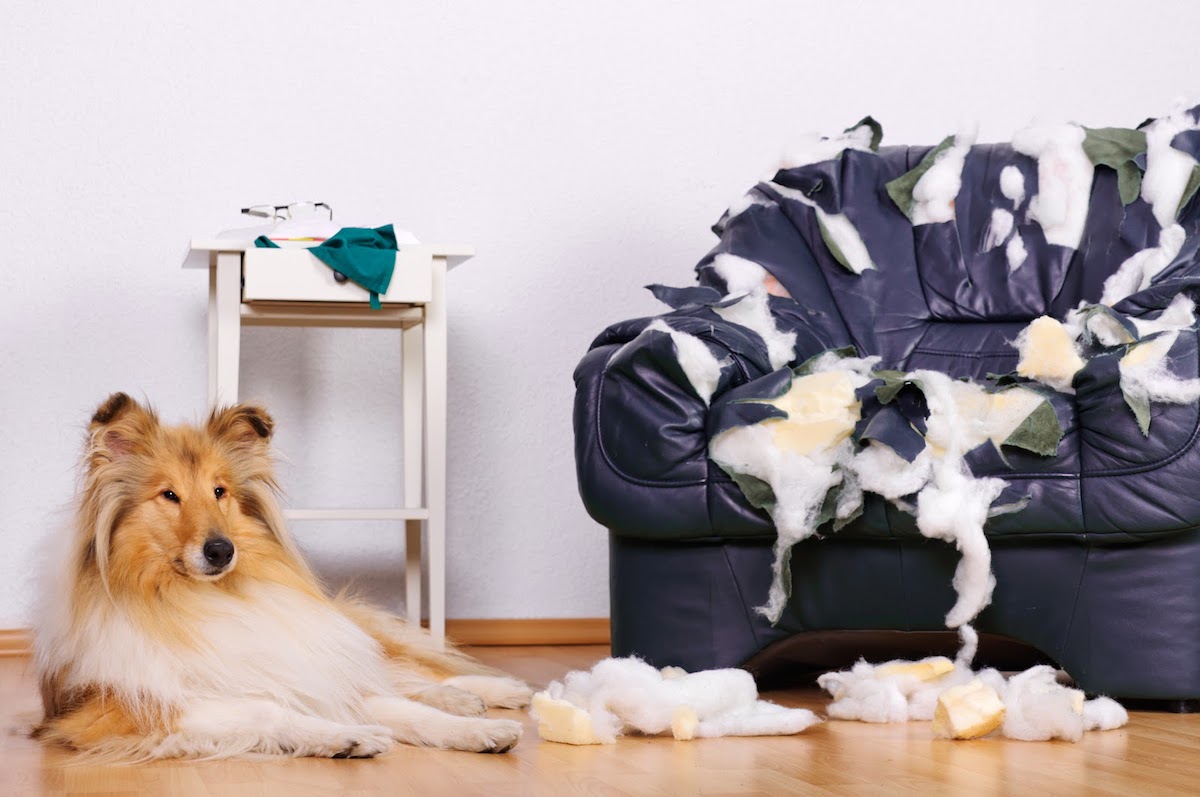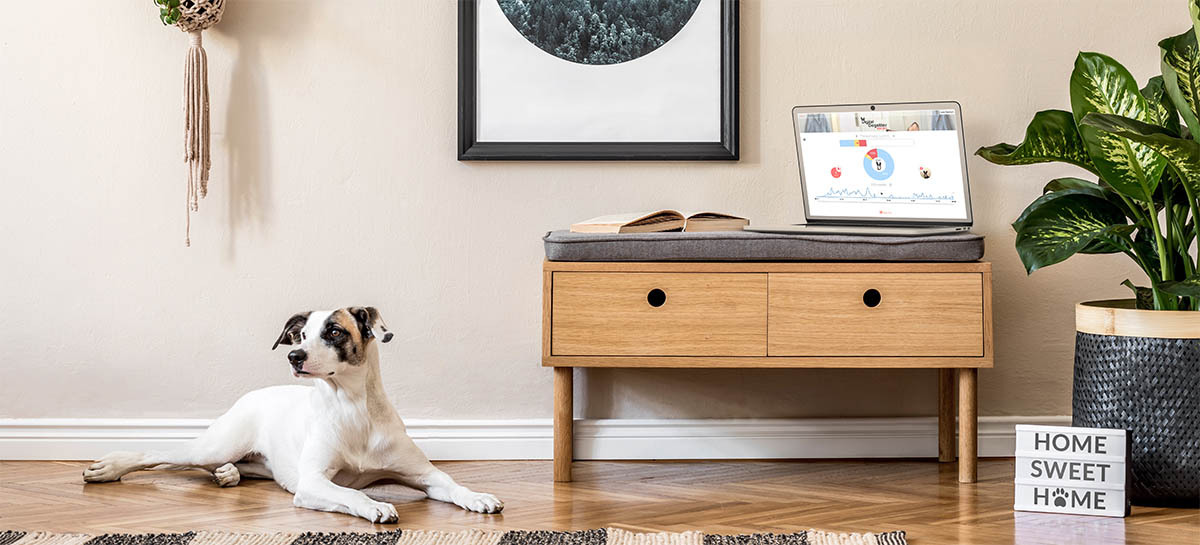Your dog trainer or surveys by Digital Dogsitter may have advised you to stop leaving your dog alone, and the temperament of some dogs could mean that you have to stop this practice immediately. This presents a challenge as you still have to get on with everyday life. Fortunately, there are several practical solutions to the situation, and stopping leaving your dog alone before training is complete won’t mean that it can never be left alone at home in the future. However, you must take care to ensure that the dog’s well-being is not compromised. Otherwise, it learns the wrong messages about being left alone.
Separation training is unlikely to be successful if the dog spends lots of other unsupervised time alone, for example, during the owner's working day. Dogs cannot be taught two things about their emotional state simultaneously: if being alone is sometimes necessary but frightening, safe and well-planned exercises will be wasted. Inconsistency makes learning difficult.

Repeating fear increases the problem
The survey questions are asked in such a way that the dog’s symptoms of fear and anxiety are highlighted. It’s important to identify fear as it is a self-perpetuating state. In other words, fear grows fear. Unlike humans, a dog cannot say, looking back, that there was no reason to panic in a fear-inducing situation. A fearful dog left alone will experience fear, and repeating the situation causes the fear to intensify. If an anxious dog is left alone, it means exposing it to fear. Excessive exposure to fearful situations won’t mean that the dog becomes accustomed to or tolerates fear. It will merely maintain and increase problematic behavior.
These frightening situations should be stopped. In the long run, the dog may become physically ill as a result of the stress produced by fear or hurt itself at home. For example, nail lesions are often found in fearful dogs, and they may experience various bone fractures due to attempts to escape. In the most extreme situations, dogs may try to escape from an apartment through the windows. Moreover, problem behaviors persist or intensify, and the dog’s overall well-being deteriorates. This can manifest itself as increasing behavioral problems in other areas of life
To resolve this issue in the quickest and best way possible, we recommend contacting a professional dog trainer. Check that the trainer you have chosen has a vocational degree, university animal trainer education, or other appropriate training in the field from an approved educational institution.
Your voice feedback clips and fear
With Digital Dogsitter, in addition to monitoring the dog's time alone, it is also possible to play recorded audio clips of the owner's voice whenever the dog's vocalizations increase. Unfortunately, playing the owner’s audio clips to the dog is not the solution for fearful dogs. A human voice can make a dog long for its humans even more. In a fearful state, the dog is unlikely to recognize the owner's instruction to calm down from the audio clip. But it may, for example, think the owner is nearby. As it’s not possible to know the effect of audio clips, the dog’s overall well-being is compromised due to fear and possible attempts to escape. Therefore, using audio clips is not recommended in this situation. It’s better to stop leaving the dog alone for the duration of the training plan.
If you think that your dog does not suffer from fear despite the Symptom Survey result and feel that it would still benefit from hearing your voice, you can try the Digital Dogsitter feedback clips using the remote control tool. By signing into the service from another device, you can monitor your dog’s behavior outside the home in real time and turn off Your voice clips if they don’t calm your dog. Pause the experiment if the feedback clips do not calm your dog right away within a few audio clips, and stop leaving your dog alone as instructed. Note that leaving a fearful and/or self-injuring dog alone to try out audio clips can be detrimental to your dog’s well-being. Only try Your voice clips with a dog that doesn't react with anxiety before you leave. Be prepared to stop the experiment immediately if your dog shows signs of fear or anxiety. You can learn how to use the remote control on the help page. If you still want to try the feedback clips, see Using Voice Feedback in Dog Training for instructions on how to use them. Using audio feedback clips requires prior training.
Solutions for continuing everyday life
Trying not to leave the dog alone presents everyday challenges to many families seeking treatment. But if the dog is afraid of being alone, the situation is inevitable. So to solve the problem, a treatment plan must be figured out.
Options:
- Dog kennels and dog nurseries can provide dog day care specifically for the needs of owners of dogs with separation anxiety. Many places offer better deals when you pay monthly rather than buying a single session.
- Relatives or friends can enjoy spending time with your dog.
- You may find other owners of dogs with separation anxiety helpful, and you can find people in the same situation in Facebook groups, for example. If your dogs get along with each other, you can arrange for them to spend time together.
- Other dog owners may also be interested in taking care of your dog in exchange for you looking after theirs when needed.
- You may find social media dog care groups where people are seeking a dog to look after for their own pleasure and enjoyment.
- Taking your dog to work is an option in some workplaces. An office dog brightens up the work environment!
- You can ask your neighbors if they are interested in caring for your dog. This provides an easy solution close to home.
When looking for solutions to caring for your anxious dog, the only limit is your imagination as there are so many options available. If you don’t already have suitable caregivers, it’s still possible to find a suitable solution with a little effort.
Health check
If your dog’s behavior is getting worse, it could be due to health problems, even if you think your dog is absolutely fine. Identifying health problems can be tricky because even a sick dog can eat, drink, play, and jump quite normally as dogs are masters at hiding pain and illness. When you live with your dog, its symptoms can often become normalized by you as they develop gradually.
A dog’s well-being and sense of security can be compromised by health problems to the extent that symptoms begin to show when they are left alone. When a dog becomes sick, its problem behaviors will be unique to it. If you have been advised to stop leaving your dog alone, you should also take it for a comprehensive health check-up. This is to ensure that training and care solutions will not be wasted efforts.
Last updated Apr 3, 2023
 Train your dog to stay home alone. With love
Train your dog to stay home alone. With love 

